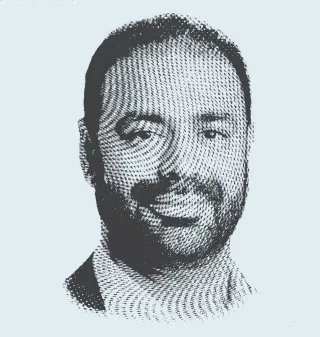We were surprised when inflation rose. We were surprised when inflation fell. And we were surprised again when inflation stopped falling. The message of all these surprises is that we — including professional economists — really don’t have a strong grasp on why prices go up and down.
The shakiness of our understanding is no small problem because inflation matters, a lot. A big reason President Biden is lagging in the polls is that voters, rightly or wrongly, blame his policies for the inflation surge of 2022, when the annual change in the Consumer Price Index briefly hit 9.1 percent. The Federal Reserve is so intent on getting inflation down to its 2 percent target that it’s risking a recession by keeping interest rates high.
Aside from those practical considerations: If we don’t understand inflation, then we also don’t truly understand anything else about the business cycle (if there even is one), because growth and inflation are intertwined.
I happen to think the stock and bond markets overreacted to the higher-than-expected increase last month in the C.P.I. that was reported last week, which to me looks more like a blip than a serious reversal. But I admit that I don’t know for sure. Nobody does.
When I wrote about our collective cluelessness in a previous blog post, the day the C.P.I. for March came out, I quoted Jerome Powell, the chair of the Federal Reserve, who likes to say that the Fed rate-setters are navigating by the stars under cloudy skies.
Since then I’ve started reading a new book by a Fed insider, Jeremy Rudd, that has made me think that things are worse than Powell’s nautical metaphor would indicate. Despite its bland title, “A Practical Guide to Macroeconomics,” Rudd’s book is a wide-ranging condemnation of academic macroeconomics for failing to generate advice and ideas that are useful to policymakers, such as Fed officials.
It’s common sense that inflation tends to go up when the economy is running hot because of the laws of supply and demand: When demand is strong and supply can’t keep up, prices rise to reset the balance. In the short run, then, high inflation goes along with low unemployment and low inflation goes with high unemployment. That inverse relationship is captured in the Phillips curve, which is a workhorse of the models used by most economic forecasters.
Nevertheless, few economists predicted inflation would rise as much as it did in 2021 and 2022, when demand was fueled by federal pandemic aid and supply was constrained by supply-chain bottlenecks. Among those who did warn of high inflation, few thought it would recede so quickly. Many thought it would take a long economic downturn to squeeze inflation out of the system, but the inflation rate fell below 4 percent by June 2023 even as the economy continued to produce lots of jobs.
That was surprising. The latest surprise is that the progress against inflation stalled right about then. This March the yearly change in the Consumer Price Index was 3.5 percent, which was up from 3.2 percent in February.
Rudd writes that the Phillips curve hasn’t been emitting useful signals. “Although the Phillips curve has been an object of fascination since it was first introduced, we have no compelling theory of inflation dynamics that would allow us to understand the Phillips correlation — or the historical shifts in the Phillips curve — on anything like a deep level,” he writes.
The fact that “we simply don’t know what caused the US economy to transition into an inflation regime” like the one of 2021 and 2022 “is embarrassing from a professional standpoint,” Rudd writes, “because it highlights that we still understand close to nothing about how inflation works despite seven decades’ worth of research.”
While mainstream theory says that wage increases tend to fuel inflation, that’s not what happened in the inflationary burst of the pandemic. Wage growth failed to keep up with prices, wrote the economists Ben Bernanke, of the Brookings Institution, and Olivier Blanchard, of the Massachusetts Institute of Technology, in a paper last year.
The two prominent exponents of mainstream macroeconomics warned, though, that “if current labor market conditions persist,” the contribution of wage growth to inflation “is likely to grow and will not subside on its own.”
Servaas Storm, a Dutch economist, criticized Bernanke’s and Blanchard’s warning in a recent article, arguing that US workers don’t have the power to demand high wages because of the low rate of private-sector unionization (6.9 percent). “The established New Keynesian models are of no use,” Storm, a senior lecturer of economics at Delft University of Technology, wrote. “The state of macro is not good.”
“Let me strongly disagree,” Blanchard, a former chief economist of the International Monetary Fund, emailed me. The Phillips curve has not died, he wrote. “Fundamentally, it is hard to believe that when the economy is overheating there is not going to be pressure of some sort on wages and prices.” He added: “That the relation is not trivial, and changes over time, does not negate its existence.”
At a high level, Blanchard’s rebuttal makes sense. Blanchard correctly warned in 2021 of the risk of inflation (though it turned out worse than he thought), and he did so using standard macroeconomic theory.
One problem with academic theories of inflation, though, is that they tend to depend on the estimation of numbers that can’t be directly observed, such as how fast the economy can grow without generating inflation and the “expected” rate of inflation. Who really knows how fast the economy can grow? Also, whose inflation expectations matter, and how can they be measured? It’s hard enough measuring observable phenomena, such as how much prices changed over the past month.
The New York Times












